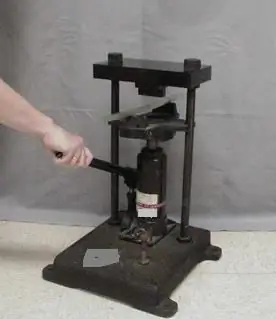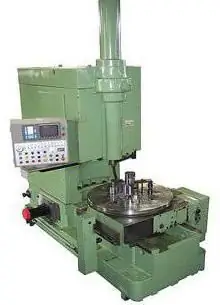2026 Author: Howard Calhoun | [email protected]. Last modified: 2025-06-01 07:12:56
Today there are many types of special agricultural machinery that facilitate manual labor in farms, including cattle breeding. Since the traditional vehicle is a tractor, manufacturers produce trailers for various jobs. One of these devices is the feeder KTU-10.
Assignment of the feeder
The main function of this type of hitch is clear from its name. Full name - "KTU-10, tractor universal feeder".
Fodder is loaded into it, transported from the place of preparation or storage to livestock sheds or open areas and dosed into feeders during movement. Feed can be chopped straw, haylage, cereals or legumes, chopped beets or carrots, complete feed mixtures.
In addition, the device can be used for maintenance of corn and forage harvesting equipment, transportation and unloading of various agricultural goods and dosed supply of prepared feedto warehouses and stationary distributors on farms.

When feed is distributed to the right side in the direction of travel or to both sides, this is the basic version in which the KTU-10 feeder is made. The manufacturer, as a rule, offers the production of a device with a distribution on the left side according to an individual order.
Features of operation
There are special requirements that must be observed when operating KTU-10. The feed dispenser is used to distribute feed only of certain sizes. Haylage should be chopped to a length of no more than 40 mm, other feed - 60 mm. Moreover, the content of particles with such sizes is more than 80%, length over 150 mm is allowed only in no more than 5% of the total mass of feed.
If dry feed is transported and distributed, KTU-10 can be operated in the temperature range from -40 °С to +50 °С. But for the distribution of wet food - only at temperatures above 0 ° С.
The height of the feeders is recommended to be no more than 75 cm, the width of the gate should be from 2.6 m, and the feed passage should be at least 2.2 m.

Agricultural tractors with a pulling force of 9 and 14 kN (traction class 0, 9 and 1, 4, respectively) - a technique with which the KTU-10 feeder can be mounted.
Specifications
The most important characteristics of the device are its carrying capacity and body volume, that is, capacity. Feeder KTU-10 transports 4 tons of cargo up to 10 cubic meters. m. He himself weighs a little more than 2 tons.
The overall dimensions of the trailer are important for driving in livestock buildings. Its length is 6.45-6.7 m, width - 2.35 m and height - 2.45 m. With an additional conveyor installed in the transport position, the width of the dispenser is 2.65 m. wheels, is 6.5 m. Track width - 1.6-1.8 m, ground clearance - 300 mm.
![feeder ktu 10 technical characteristics [1] feeder ktu 10 technical characteristics [1]](https://i.techconfronts.com/images/055/image-163843-3-j.webp)
The speed of KTU-10 is about 30 km/h.
Producers show more characteristics regarding the distribution of feed. This is the process capacity, which can be in the range of 70 to 500 m3/h, and there are usually six options for changing the distribution rate.
KTU-10 device
The feeder is a tractor trailer with steerable front wheels. The mechanisms by which the feed is loosened, moved and dosed are located in the body.
The undercarriage of the unit consists of a bottom, to which axles with wheels are suspended on springs, and a towing device for attaching to a tractor. The rear axle is simple in design - it is a beam made of rolled metal of a certain profile. But the front one is a tubular beam, on which the axles of the wheels with steering knuckles are welded. The hydraulic brake system is based on the rear wheels, which is controlled from the tractor driver's cab.
A metal body is mounted on the bottom. It has unloading windows and a folding tailgate on the sides.
For safetythe front axle is equipped with a locking device that locks the wheels when moving backwards.
The distributing device is a longitudinal (chain transmission) and a transverse (web stretched over rolls) conveyors, as well as two drum beaters, which are fixed in the side walls of the body. The drive of its working bodies is carried out from the PTO of the tractor through the drive mechanisms of the feeder.
KTU-10 work
Prepared, pre-shredded feed is loaded evenly into the KTU-10 body. The feeder is fed by the tractor into the aisle. Already in it the power take-off shaft is turned on. The longitudinal conveyor with scrapers feeds the feed to the beaters, which loosen it and, in turn, feed it to the transverse conveyor, which, depending on the design of the distributor, distributes it to one or both sides simultaneously.
If the unit is operating as a self-unloading trailer, the longitudinal conveyor unloads the feed to the rear through the folded tailgate.
The distribution rate is adjusted by adjusting the ratchet mechanism, as well as changing the speed of the longitudinal conveyor and tractor.

All these works can be performed by one person, providing fodder for a herd of 300-400 heads.
Feeder modifications
In addition to the base model, several more dispenser options are available
Feeder KT-6 has a lower carrying capacity and dimensions, but at the same time a larger body capacity. It is 6 cu. m. This unit due to its small sizemuch more maneuverable than the prototype.
The KTU-10A model completely repeats the basic one in terms of technical characteristics. It features a reinforced body frame and turntable.
KTU-10 feeder is produced on balancers. This modification is marked with the number "1" and is a tractor single-axle semi-trailer on dual wheels.
KTU-10 is a feeder, one of the modifications of which can be found in almost every livestock farm.

And pastoralists will stop using it only when (if at all) the process of preparing, moving and supplying feed to feeders is fully automated.
Recommended:
Thermal power plants: description, operation and technical characteristics

The article is devoted to thermal power plants. The features of such objects, the nuances of operation and maintenance are considered
Hydraulic press: description, device, principle of operation, characteristics

Processing various materials under strong physical pressure allows you to perform stamping, cutting, straightening and other operations. Similar works are organized in construction, in production, in the transport sector and car services. Technical conditions for them are most often created by means of a hydraulic press, which is controlled directly by the operator without power auxiliary units
Electric locomotive 2ES6: history of creation, description with photo, main characteristics, principle of operation, features of operation and repair

Today, communication between different cities, passenger transportation, delivery of goods is carried out in a variety of ways. One of these ways was the railroad. Electric locomotive 2ES6 is one of the types of transport that is currently actively used
Low pressure heaters: definition, principle of operation, technical characteristics, classification, design, operation features, application in industry

Low pressure heaters (LPH) are currently used quite actively. There are two main types that are produced by different assembly plants. Naturally, they also differ in their performance characteristics
Gear shaping machines: description, characteristics, types and mode of operation

Gear shaping machines: specifications, settings, operation, features, purpose. Gear shaping machines: description, principle of operation, photo

